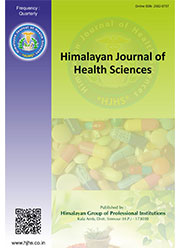Recent classification of diabetes mellitus
Abstract
The right classification for diabetes mellitus (DM) allows a more adequate treatment and comprises four categories: type 1 DM, type 2 DM, other types, and gestational diabetes. Assigning a type of diabetes to an individual often depends on the circumstances present at the time of diagnosis, and many diabetic individuals do not easily fit into a single class. Diabetes mellitus and lesser forms of glucose intolerance, particularly impaired glucose tolerance, can now be found in almost every population in the world and epidemiological evidence suggests that, without effective prevention and control programmes, diabetes will likely continue to increase globally. These findings were confirmed in a similar study in India, in which the FPG and 2-h PG were each strongly and equally associated with retinopathy. For both the FPG and the 2-h PG, the prevalence of retinopathy was markedly higher above the point of intersection of the two components of the bimodal frequency distribution (FPG = 129 mg/dl [7.2 mmol/l] and 2- h PG = 207 mg/dl [11.5 mmol/l]). In the NHANES III, 2,821 individuals aged 40-74 years received an OGTT, a measurement of HbAlc, and an assessment of retinopathy by fundus photography.
References
2. AOAC, Official Methods Of Analysis, The Association Of Official Analytical Chemistry, Washington, 1990.
3. Belay A., Mass Culture Of Spirulina Outdoors: The Earthrise Farms experience. In:Vonshak, A., Ed. Spirulina Platensis (Athrospira): Physiology, Cell-biology and Biotechnology, Taylor and Francis, London, 1997, Pp. 131-158.
4. Charfen M.A., Madonna F., Diabetic Ketoacidosis, Emergency Medicine Clinics of North America, 2005; 23:609-628.
5. Defronzo R. A. and Ferrannini M. D., Insulin Resistance–A Multifaceted Syndrome Responsible for NIDDM, Obesity, HTN, Dyslipidemia, Diabetes Care, 1991; 14:173-194.
6. Falquet JA, Sustainable Response to Malnutrition in Hot Regions: The Local Production of Spirulina, Antenna Technologies, Geneva, 2000.
7. Gupta A., Rajeev G., Mukesh S., Shweta R., Gupta V.P., Kunal K., Prevalence Of Diabetes, Impaired Fasting Glucose And Insulin Resistance Syndrome In An Urban Indian Population, Diabetes Research And Clinical Practice, 2003; 61:69-76.
8. Hayashi O., Katoh T., Okuwaki Y., Enhancement of Antibody Production in Mice By Dietary Spirulina Platensis, J Nutr Sci, 1994; 40:431-41.
9. Anonymous, Commercial Development of Microalgal Biotechnology: from the Test Tube to the Market Place. Biomolecular Engineering, 2003; 20(4-6):459-466

This work is licensed under a Creative Commons Attribution-NonCommercial 4.0 International License.
The International Journal of Innovative Science & Technology affairs require a formal written transfer of copyright from the author(s) for each article published. We therefore ask you to complete and return this form, retaining a copy for your records. Your cooperation is essential and appreciated. Any delay will result in a delay in publication.
I/we have read and agree with the terms and conditions stated Page 2 of this agreement and I/we hereby confirm the transfer of all copyrights in and relating to the above-named manuscript, in all forms and media, now or hereafter known, to the International Journal of Drug Regulatory affairs, effective from the date stated below. I/we acknowledge that the IJDRA is relying on this agreement in publishing the above-named manuscript. However, this agreement will be null and void if the manuscript is not published in the IJIST.
Download link for COPYRIGHT FORM





